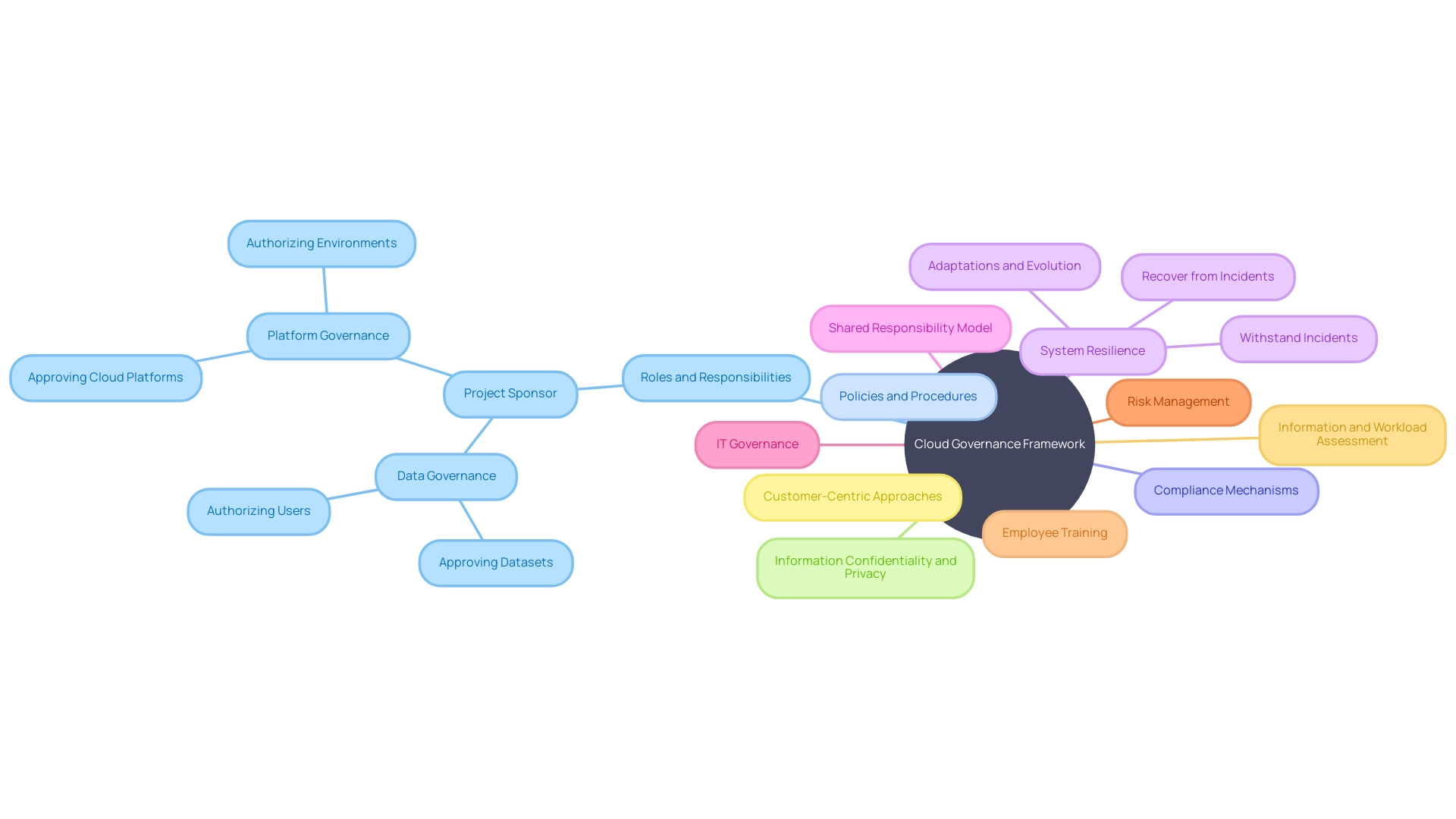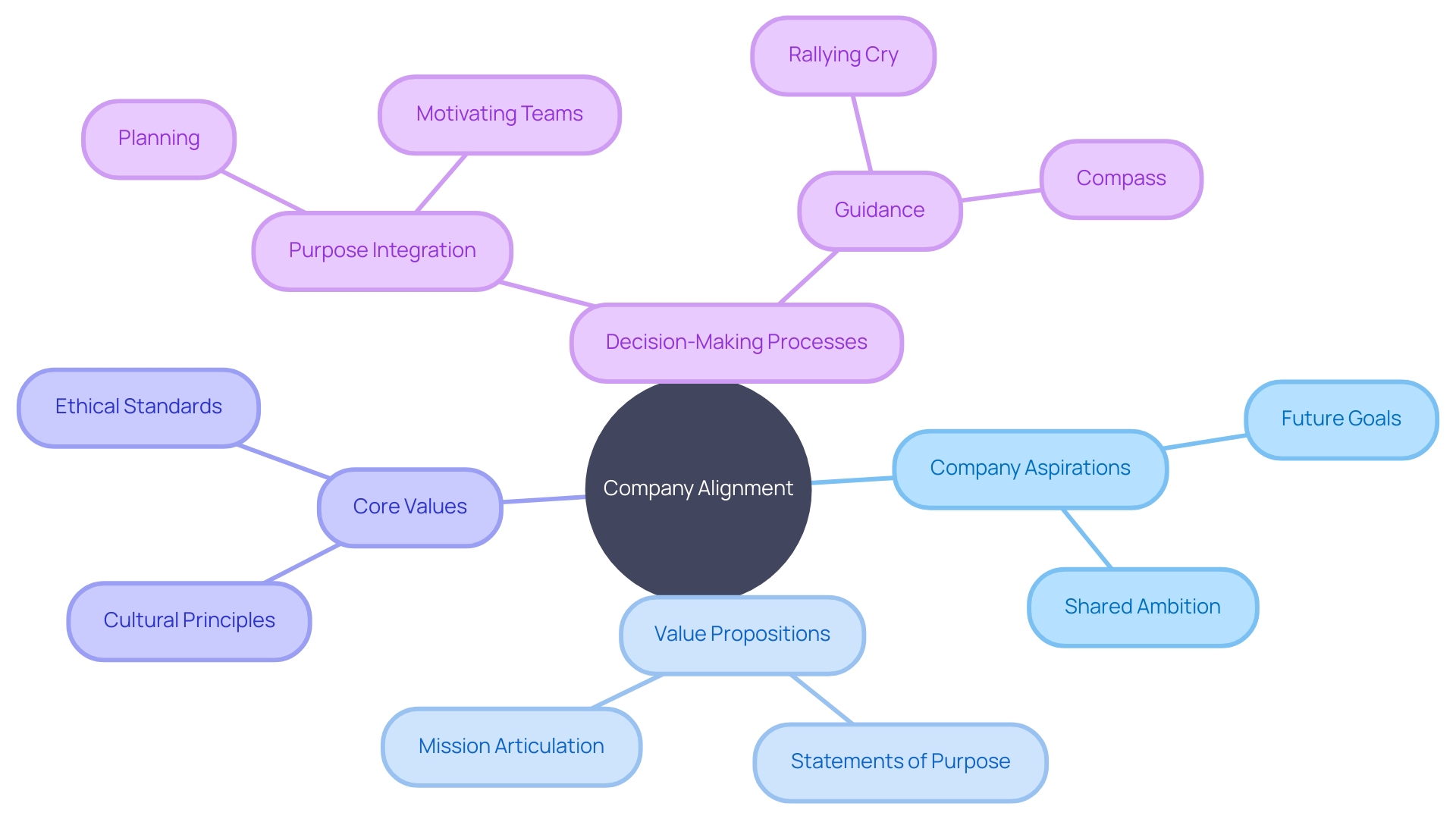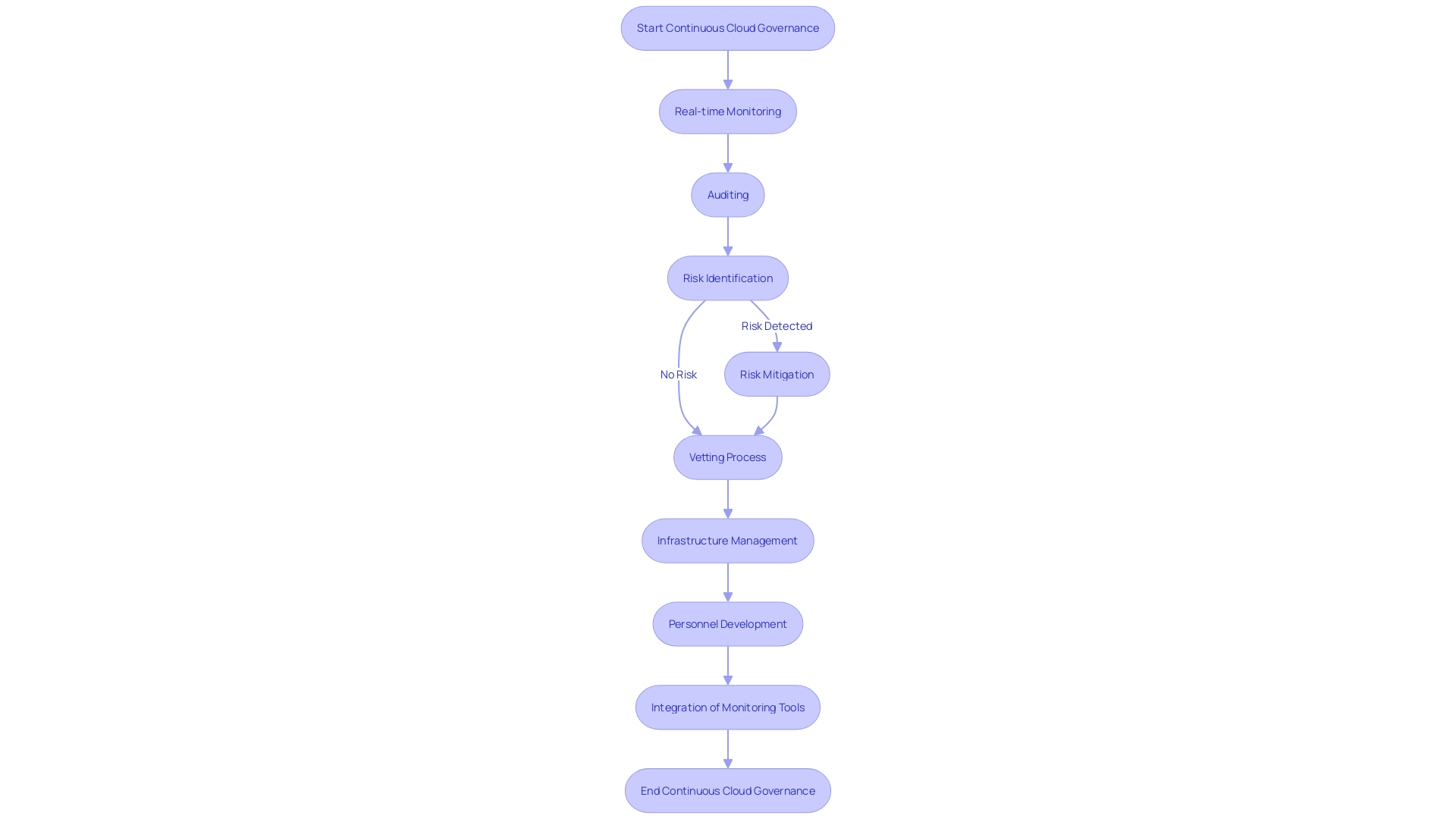Introduction
Cloud governance is a critical aspect of managing and securing cloud resources effectively. It involves establishing clear roles and responsibilities, implementing precise policies and procedures, and ensuring compliance. By prioritizing resilience and anticipating potential disruptions, businesses can minimize long-term impacts and mitigate future risks.
This article explores the foundations and best practices of cloud governance, the processes and workflows involved, the tools and technologies that support it, and the importance of continuous monitoring and improvement. By understanding these key elements, organizations can navigate the complexities of cloud environments with confidence, ensuring compliance, security, and operational excellence.
Cloud Governance: Foundations and Best Practices
Effective management of the cloud acts as the cornerstone for strong control. It necessitates a detailed framework that delineates clear roles and responsibilities, formulates precise policies and procedures, and establishes mechanisms for ensuring compliance. At the heart of this governance lies the principle of overall system resilience, which empowers organizations to be proactive in anticipating, preparing for, and recovering from incidents related to cloud technology. By prioritizing resilience, businesses can contain disruptions and minimize long-term impacts, adapting and evolving their practices to mitigate future risks.
To illustrate, consider the shared responsibility model of cloud services, where the division of duties varies across IaaS, PaaS, or SaaS offerings. It is crucial for organizations to understand their service provider's documentation and best practices thoroughly to ensure mutual accountability in upholding measures.
Furthermore, since IT governance constitutes the foundation of IT safeguarding, it presents crucial policies encompassing protection of information, controls on access, and compliance with regulations. This foundation is vital for constructing a fortified IT environment, with risk management playing a key role. Identifying risks and strategizing for their mitigation instills a proactive stance against cyber threats. Correspondingly, employee training programs become indispensable in educating staff about security protocols and preventing human-error-induced breaches.
In addition, the classification and assessment of information and workload should be the initial step in formulating an autonomous cloud strategy, evaluating the sensitivity and criticality of the information and its applications. This evaluation directs strategic placement of workloads and information, with an emphasis on the consequences of potential compromises, such as information leaks or service disruptions.
Echoing the sentiment of customer-centric approaches, as in Amazon's model, governments and businesses should reverse-engineer from the citizen or customer's needs, ensuring that solutions devised are tailored to address the core issues faced by users. This ideology expands to governance in the sky, where comprehending the user's viewpoint is crucial for crafting efficient governance frameworks.
Finally, case studies emphasize the importance of preserving information confidentiality and user privacy in the growing domains of remote and edge computing. As information storage and sharing expand, particularly with emerging technologies like the Internet of Vehicles, encryption methodologies, such as Ciphertext Policy Attribute-Based Encryption, become crucial for safeguarding sensitive information against unauthorized access.

Cloud Governance Processes and Workflows
To guarantee the strong management of online resources, organizations are implementing organized procedures for provisioning, monitoring, and managing these assets. A case in point is the use of AI by a tax agency to interact with users through a chatbot, necessitating alignment with organizational guidelines and the need for developers to ensure the system's responses are accurate and unbiased. The complexity of managing numerous models in production requires vigilance to ensure each one is thoroughly vetted prior to deployment. Traditional manual review processes, while effective, can become unwieldy over time as highlighted by the practices of Ptolemaic Egypt, where dual bureaucracies managed and supervised tax collection.
Contemporary IT governance frameworks are crucial, consisting of policies and standards that tackle important aspects like protection of information, controls for accessing, and response to incidents. As service providers and clients operate under a shared responsibility model, it's crucial for both parties to understand their respective roles in securing environments. The implementation of cloud controls is also imperative to protect sensitive data against cyberattacks and data breaches, thereby maintaining compliance with industry standards and avoiding legal consequences.
Reflecting on the case of Sirius Technologies and its transition to Cloud Development Environments with Strong Network's platform, it's clear that streamlining workflows can significantly enhance productivity. By focusing on financial services and adopting Better Finance principles, Sirius Technologies has managed to expand its service reach while maintaining intellectual property management and fostering global collaboration.
Instilling a culture where protection is the responsibility of all, as demonstrated by the approach at AWS, can change an organization's outlook on governance. Employees at all levels are trained to consider safety as a fundamental aspect of their roles, ensuring it is integrated into every product and service from the beginning. This ownership model promotes a proactive stance towards safeguarding, which is more effective than retrospective 'bolt-on' solutions.
Organizations must put purpose into action, aligning decision-making with their company's aspirations, value propositions, and core values. This alignment not only motivates teams but also guides their efforts toward shared ambitions. The example of Allstate Insurance demonstrates the importance of embedding purpose in planning and decision-making processes.

Cloud Governance Tools and Technologies
Exploiting the potential of oversight in the sky requires the implementation of advanced tools and technologies that guarantee strong administration, adherence, and protection of sky assets. Cloud management platforms (CMPs) offer a comprehensive suite of capabilities that enhance visibility across cloud environments, enabling organizations to automate tasks, optimize costs, and ensure resources are used efficiently.
CMPs are instrumental in enforcing governance policies and maintaining control by utilizing automation and orchestration. This automation extends to compliance monitoring tools, which play a critical role in upholding the regulatory standards and security solutions that protect against threats and vulnerabilities.
For example, when examining the obstacles encountered by the state government of Alaska, which aimed to enhance digital service availability and enhance capabilities, they shifted towards solutions in the sky to surpass the constraints of their secluded and ineffective traditional systems. Likewise, a government organization overseeing a intricate fleet system across several outdated programs discovered that consolidating and optimizing their information and software in the digital environment resulted in enhanced administration and productivity.
Efficient management of the cloud environment also involves ongoing risk control, as highlighted by recent trends that emphasize the importance of establishing a robust policy framework that covers data protection, access controls, encryption, incident response, and regulatory compliance. Given the significant role of human error in breaches, it is imperative to include comprehensive employee training programs in the overall risk management strategies.
By integrating monitoring and logging into the management of cloud services, organizations can ensure they are prepared for audits. This crucial process entails securely storing and retaining logs, protecting them with encryption and access controls, and ensuring all relevant activities are recorded accurately. These steps are foundational to compliance and are advised by experts who emphasize the importance of data quality and governance in enhancing the utility and accuracy of data for day-to-day users.
In the context of the evolving landscape, organizations are increasingly adopting hybrid and multi-strategies, with recent statistics showing a majority leaning towards these models. A comprehensive protective framework is pivotal for establishing strong postures within these dynamic computing environments.
Real-world case studies, like that of Sirius Technologies, illustrate the benefit of transitioning to secure Cloud Development Environments (CDEs) to improve productivity, manage intellectual property, and facilitate global collaboration. Their achievement demonstrates how the utilization of tools for managing the cloud can optimize the software development life cycle, particularly in the financial services sector.
In brief, the suitable blend of cloud oversight tools and technologies, reinforced by automation, coordination, and a proactive method to risk control, can empower organizations to effectively navigate the intricacies of cloud environments, guaranteeing adherence, protection, and operational superiority.
Continuous Monitoring and Improvement in Cloud Governance
Real-time monitoring, auditing, and reporting are essential elements of strong governance in the digital sphere. Ensuring resources' security, performance, and compliance necessitates a vigilant approach to risk identification and mitigation. The complexity of technology and the pace at which it evolves call for a dynamic model of continuous assessment and improvement.
In the case of AI, where systems must interact with users sensitively and without bias, the challenge is magnified. For example, a tax agency employing a chatbot must instill confidence that interactions comply with organizational guidelines. With the potential of deploying numerous models, a meticulous vetting process akin to Enterprise Review Committees or Change Advisory Boards is needed to scrutinize each deployment.
Chess.com's experience illustrates the criticality of stable IT infrastructure. The platform's dedication to offering a smooth experience for its millions of users worldwide relies on a strong combination of public computing and on-site solutions. Their IT head, James Kelty, highlights the significance of proper infrastructure to promote growth and maintain connections, leveraging tools like RackConnect Global for scalable utilization.
The European Union's IPCEI-CIS initiative further highlights the significance of real-time and low-latency services facilitated by distributed computing resources. The project aims to create an interoperable and energy-efficient cloud-edge data processing ecosystem, which underscores the need for continuous technological vigilance.
Reflecting on common reasons for technology failures, such as inadequate architecture or the scarcity of qualified cloud-computing professionals, it's evident that ongoing improvement is not just a technical requirement but also a human endeavor. The continuously growing intricacy of cloud-based solutions necessitates that organizations prioritize the development of competent personnel to avoid expensive errors that can arise after implementation.
In summary, maintaining effective cloud governance is an ongoing journey that demands constant vigilance, a commitment to improvement, and a blend of technological and human resources expertise. By learning from the experiences of industry leaders and integrating state-of-the-art monitoring tools, organizations can adapt to the evolving landscape of threats and business needs.

Conclusion
In conclusion, cloud governance is crucial for managing and securing cloud resources effectively. It involves establishing clear roles, implementing precise policies, and ensuring compliance. By prioritizing resilience, businesses can minimize disruptions and mitigate future risks.
Understanding the shared responsibility model of cloud services is vital for upholding security measures and mutual accountability. IT governance forms the backbone of IT security, with critical policies covering data protection and access controls. Risk management plays a key role in identifying and mitigating cyber threats, supported by comprehensive employee training.
Data and workload classification are essential for crafting a sovereign cloud strategy. Effective governance frameworks require understanding the user's perspective and tailoring solutions to address their core issues.
Structured processes and workflows are crucial for robust governance of cloud resources. Modern IT governance frameworks address key security aspects such as data protection and incident response. Inculcating a culture where security is everyone's job promotes a proactive stance towards governance.
Deploying sophisticated tools and technologies, like cloud management platforms (CMPs), enhances visibility and automates tasks. Ongoing risk management, monitoring, and logging are crucial for compliance and audit readiness.
Continuous monitoring and improvement are cornerstones of cloud governance. Real-time assessment and improvement are necessary due to the complexity and rapid evolution of technology. Cultivating skilled personnel and leveraging monitoring tools are essential for adapting to evolving threats.
In summary, effective cloud governance requires clear roles, precise policies, compliance measures, and a focus on resilience. By understanding the foundations and best practices, implementing structured processes, leveraging the right tools, and embracing continuous monitoring and improvement, organizations can navigate cloud environments with confidence, ensuring compliance, security, and operational excellence.




